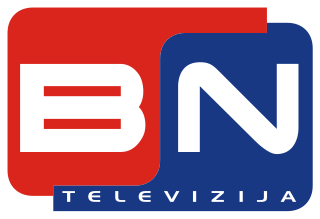Public broadcasting involves radio, television and other electronic media outlets whose primary mission is public service. Public broadcasters receive funding from diverse sources including license fees, individual contributions, public financing and commercial financing.
Television in the Netherlands was officially introduced in 1951. In the Netherlands, the television market is divided between a number of commercial networks, such as RTL Nederland, and a system of public broadcasters sharing three channels, NPO 1, NPO 2, and NPO 3. Imported programmes, as well as news interviews with responses in a foreign language, are almost always shown in their original language, with subtitles.

Internet Protocol television (IPTV) is the delivery of television content over Internet Protocol (IP) networks. This is in contrast to delivery through traditional terrestrial, satellite, and cable television formats. Unlike downloaded media, IPTV offers the ability to stream the source media continuously. As a result, a client media player can begin playing the content almost immediately. This is known as streaming media.

FashionTV is an international fashion and lifestyle broadcasting television channel. Founded in France in 1997, by its Polish-born president Michel Adam Lisowski, FashionTV is a widely distributed satellite channels in the world with 31 satellite and 2,000 cable systems. As of 2014, it had 400 million views all over the world.

RTV BN is a Bosnian radio-television company based in Bijeljina. The company was founded on 5 May 1998. RTV BN is currently the highest rated TV channel in Republika Srpska entity of BiH. RTV BN has over 200 employees with news correspondents in BiH, Belgrade, London, US and Vienna, as well as other cities. RTV BN is currently available in Europe, North America, Australia, and New Zealand via satellite.

The Filipino Channel, commonly known as TFC, is a 24-hour global subscription television network based in Daly City, California with studio in Redwood City, California and offices in Africa, Australia, Brazil, Canada, Cayman Islands, UAE, Ethiopia, Hungary, Israel, Japan, Mexico, Middle East, the Netherlands, New Zealand, South Africa, Malaysia, Singapore, Thailand, Indonesia and the United Kingdom. It is owned and operated by the Filipino media conglomerate ABS-CBN Corporation. Its programming is composed primarily of imported programs from Filipino cable channel Kapamilya Channel and programs produced and distributed by ABS-CBN Entertainment (entertainment) and ABS-CBN News and Current Affairs, while the ABS-CBN television network is currently inactive due to its shutdown.

Television in Hungary was introduced in 1957. Transmission in colour was introduced to Hungarian television for the first time in 1971. Hungary had only one television channel until 1973. It was only in the mid 1990s when private and commercial broadcasting was introduced to Hungary.
RTV BosTel or BosTel is a Bosnian language broadcaster in North America serving the Bosnian diaspora.
Television in Serbia was introduced in 1958. It remains the most popular of the media in Serbia—according to 2009 survey, Serbian people watch on average 6 hours of television per day, making it the highest average in Europe.
Television in Italy was introduced in 1939, when the first experimental broadcasts began. However, this lasted for a very short time: when fascist Italy entered World War II in 1940 all transmissions were interrupted, and were resumed in earnest only nine years after the end of the conflict, on January 3, 1954.
Television in Belgium was introduced in 1953 and began with one channel each in Dutch and French. The country is heavily cabled, with 93% of households watching television through cable as of 2003.
Television in Croatia was first introduced in 1956. As of 2012, there are 10 nationwide and 21 regional DVB-T television channels, and there are more than 30 other channels either produced in the Republic of Croatia or produced for the Croatian market and broadcast via IPTV, cable, or satellite television. The electronic communications market in Croatia is regulated by the Croatian Regulatory Authority for Network Industries (HAKOM), which issues broadcast licenses and monitors the market. The DVB-T and satellite transmission infrastructure is developed and maintained by the state-owned company Odašiljači i veze (OiV).
CroatianTV-America, Inc. is a wholly owned subsidiary of EURO-World Network Inc.; the Broadcaster's representative for North America and South America; responsible for the overall Marketing and Distribution Strategy of the media offering. The company broadcasts Croatian radio and television programming to the Croatian communities in North America.
Television in Bosnia and Herzegovina was first introduced in 1961. Out of 94 TV stations, 71 are commercial, 20 are public, while 3 public services are funded through subscription.
Super TV is the first Bosnian IPTV provider, owned by Logosoft.
RTL Croatia World is an international TV channel dedicated to Croats living outside Croatia operated by the CME Group as of 1 June 2022. The channel was launched on 11 July 2016.
Mobibase is a France-based company., publishing and distributing ethnic and thematic TV channels and VOD content to mobile publishers, operators, cable and satellite TV and IPTV/OTT services in Europe, the Americas, Middle East, and Africa





